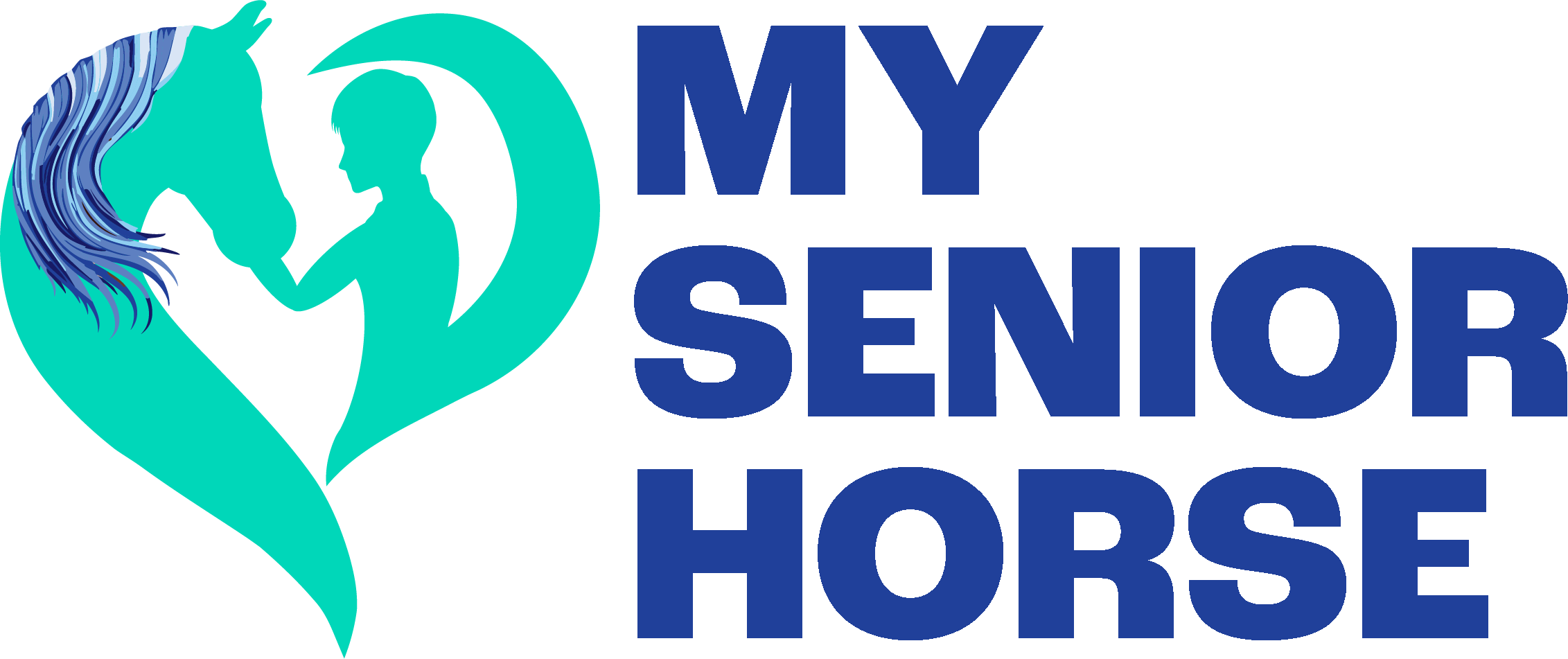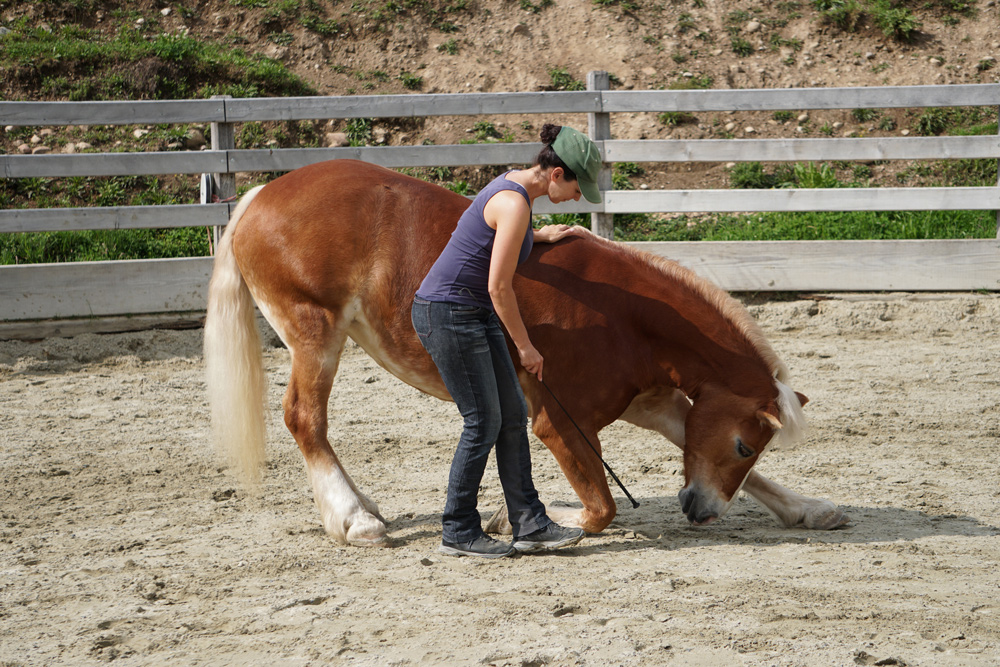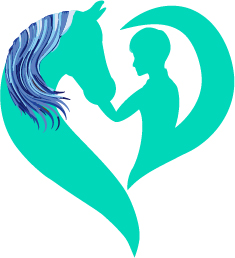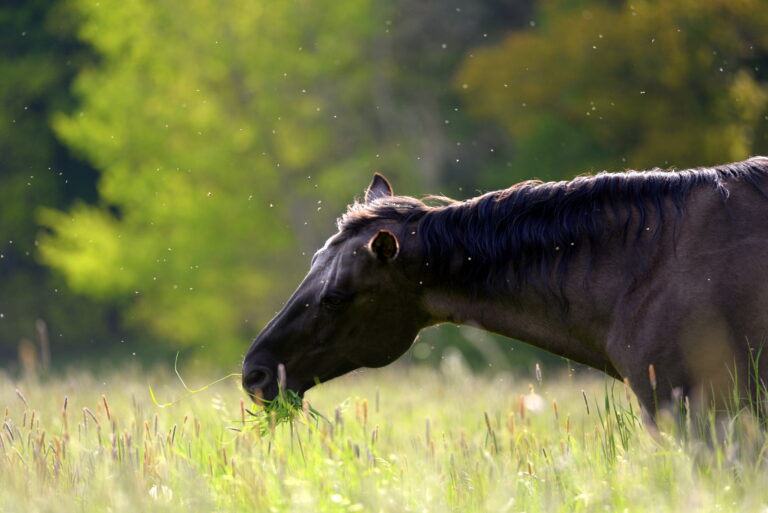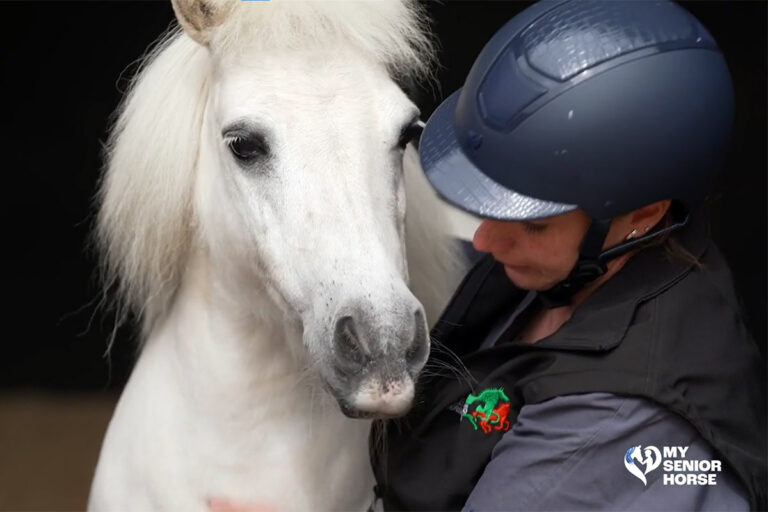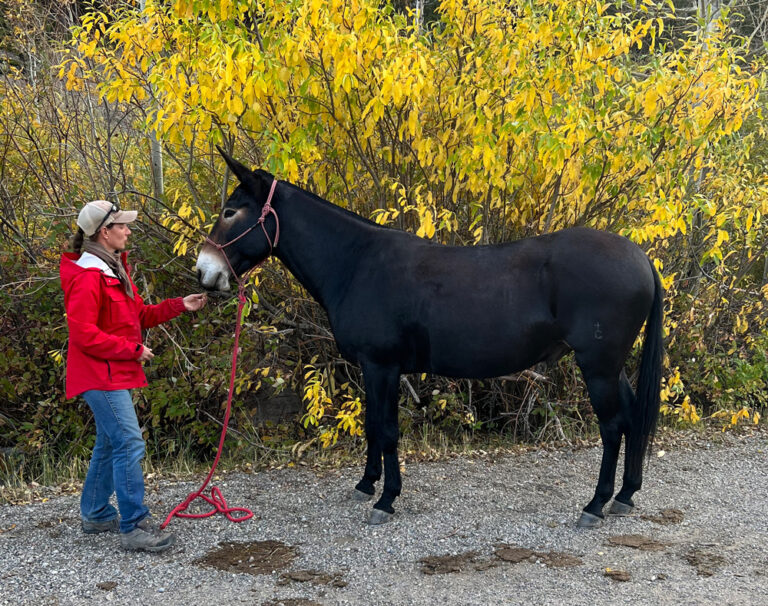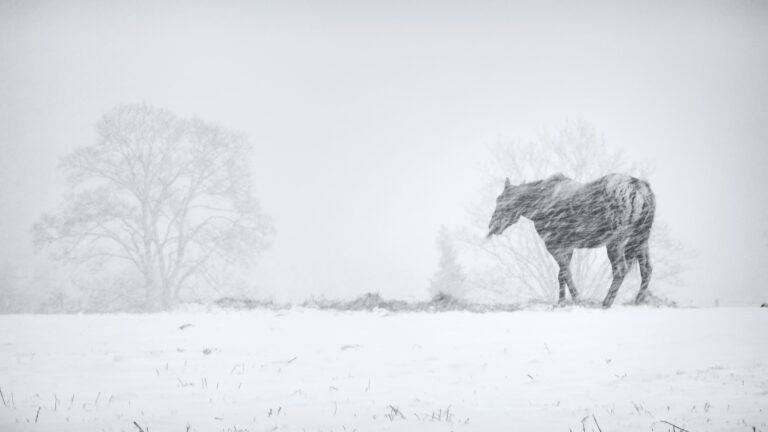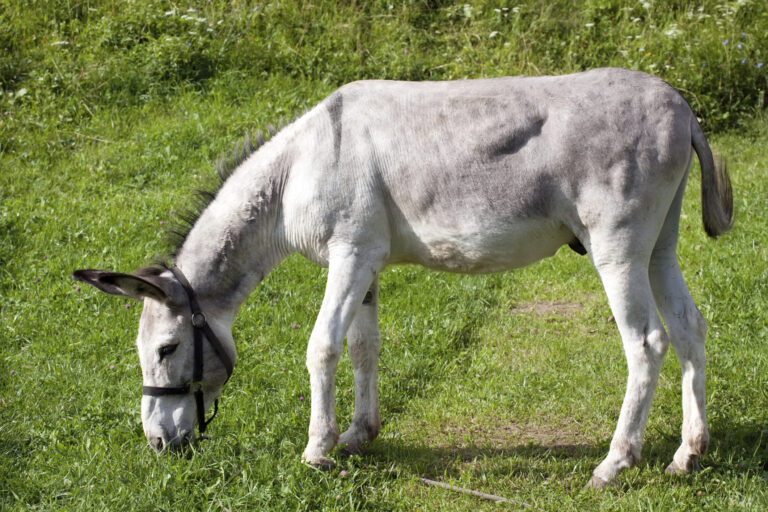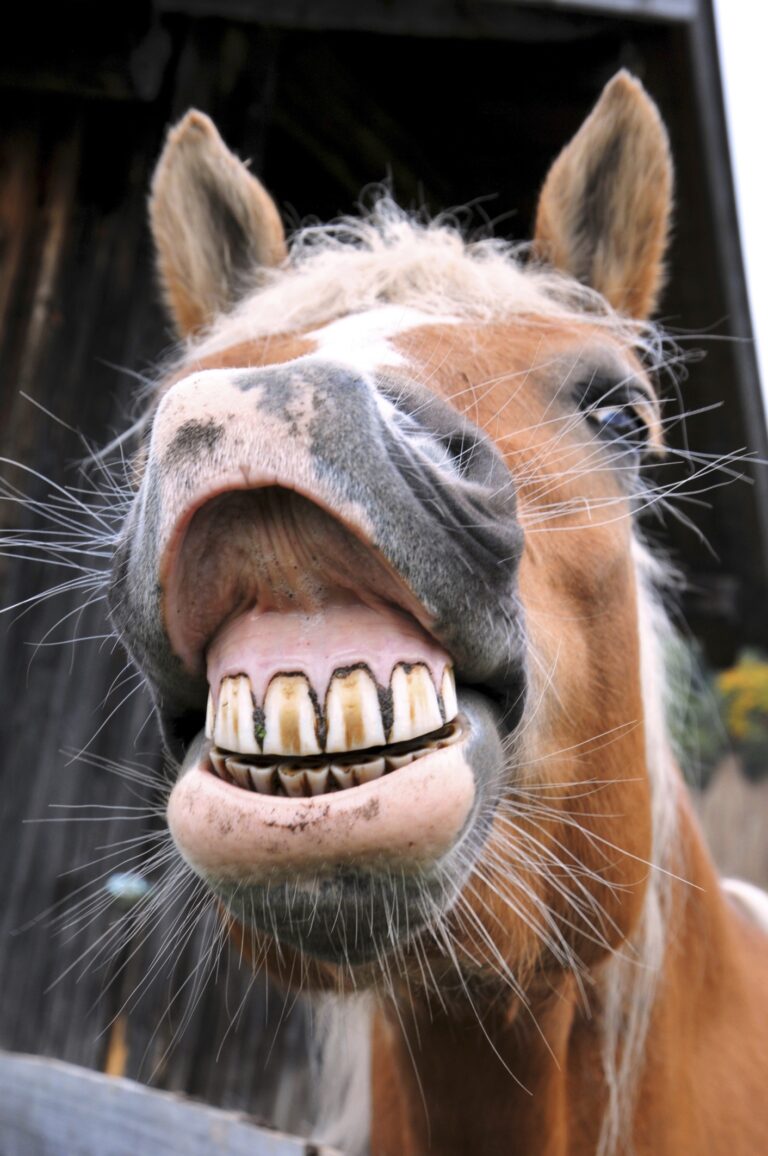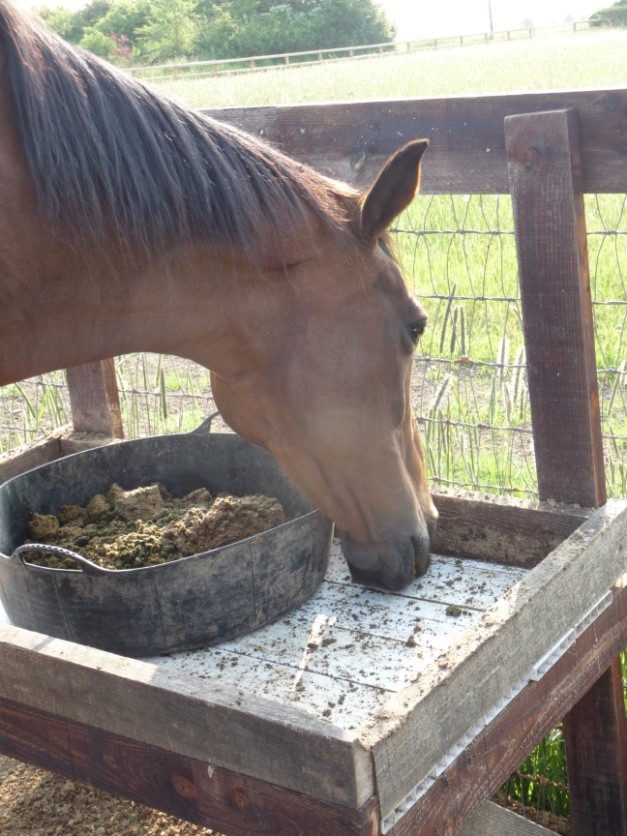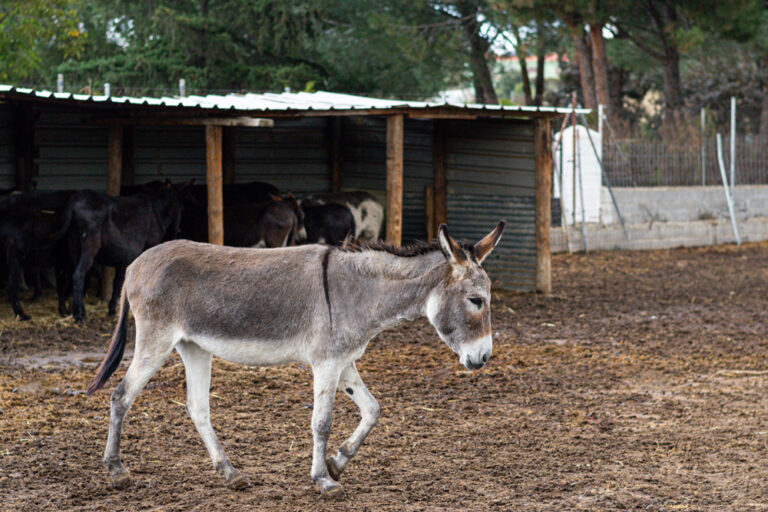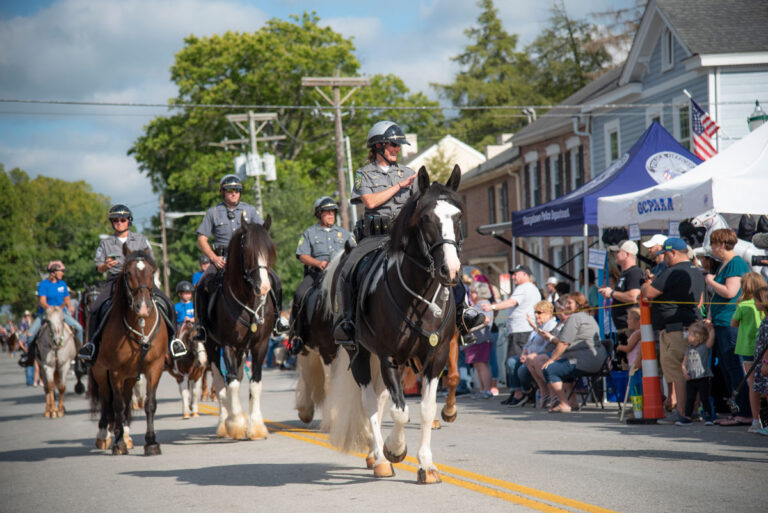In this podcast, we discuss positive reinforcement when working with horses with veterinarian Eleanor Girgis.
Girgis is the Ella MacGregor resident in Equine Behavioural Medicine, Dick Vet Equine Hospital, University of Edinburgh, Scotland. Girgis graduated from the University of Edinburgh in 2021. She then completed a combined hospital and ambulatory internship at Cambridge Equine Hospital before taking her first job in equine charity practice at Redwings Horse Sanctuary in Norfolk. Girgis then worked at Bransby Horses, another equine charity in Lincoln, before starting a residency at the University of Edinburgh. At the university she is training toward becoming a specialist in Equine Behavioural Medicine.
Girgis’ particular areas of interest are the relationship between pain and behaviour, the provision of low-stress veterinary care, and human behaviour change for animal welfare. She also has a strong interest in research. Her first study is focusing on UK horse owners’ understanding of learning theory and how this relates to their perception of—and response to—problem behaviour. This is an ongoing project focused on exploring the complex link between pain and behaviour.
Learning Theory
Girgis said learning theory describes the principles of how any animal learns—including dogs, cats, horses, and people. Learning theory is ongoing all of the time, and there are lots of different levels of complexity.
“We can break it down into non-associative learning and associative learning,” she explained. “So, when it comes to positive reinforcement, that relates to associative learning. That’s what we’ll focus on.”
She described classical and operant conditioning. Classical conditioning is what the researcher Ivan Pavlov did with his dogs in the late 1890s and early 1900s. He discovered that dogs would salivate not only when presented with food, but also when a bell was rung to announce it was time for food. This led to the understanding that a neutral stimulus (bell) could become associated with an unconditioned stimulus (food) and elicit a conditioned response (salivation).1
Girgis said an example in a horse barn might be when horses see the owner entering the feed room. They learn that soon the owner will be coming out with a yummy bucket of feed. “That’s conditioning.” she explained.
Operant Conditioning
Girgis said operant conditioning can be divided into four different quadrants. “We have positive reinforcement, negative reinforcement, positive punishment, and negative punishment,” she said. “So first, let’s think about the difference between reinforcement and punishment.
“Reinforcement is when we are making a behaviour more likely to recur in the future, whereas punishment is when we’re making a behaviour less likely to occur in the future,” Girgis explained. “And if we think about the positive and the negative, it’s about whether we’re adding something or taking something away.”
She said positive reinforcement is when we add something pleasant to make a behaviour more likely to recur in the future. So, it’s usually a behaviour that we want to see more of. “For example, if you’re riding your horse, it’s done a really nice movement under saddle, you might give them a scratch. You might say good girl, good boy. You might give them a wee treat or something. And so we’re reinforcing that behaviour because we want to see more of it.”
Negative Reinforcement
Negative reinforcement is when we remove something unpleasant or aversive to make a behaviour more likely to recur, Girgis said.
“An example of that might be if you’re riding your horse and you’re training them to yield their hindquarters, you might apply some leg pressure to their side and you’ll keep that leg pressure there. And when they offer a step by yielding their hindquarters, which is the desired behaviour, you remove that pressure. So the horse learns next time you apply that that pressure or stimulus, they learn, ‘Oh, if I move my hindquarters,
the pressure disappears.’ So you’re negatively reinforcing that behaviour.”
She didn’t spend much time talking about punishment for welfare reasons and for ethical reasons. “It’s got lots of negative consequences,” she said. “Often it can induce fear and stress that’s counter-intuitive to learning, and often it’s not a very constructive method of training. It tells the animal what we don’t want them to do, but it doesn’t teach the animal what we want them to do instead. So really we want to be reinforcing desirable behaviours rather than punishing unwanted behaviours.”
Positive Reinforcement
One of Girgis’ favorite methods of positive reinforcement is clicker training.2
“Clicker training actually uses classical conditioning and operant conditioning,” she explained. “Clicker training uses a click and/or a marker word or any sort of stimulus that really stands out to the horse. And we classically condition that click usually or that marker word to predict that food is going to arrive. (Much like Pavlov’s dogs and the bell.)
“So we do that through a number of repetitions,” she continued. “We might click, give them a treat, click, give them a treat, click, give them a treat. And over a number of repetitions they learn, ‘Oh, when I hear a click, that means food’s coming.’ “
Girgis said because the click is a stand-out moment in time, we can use it to get precise timing with what we’re training.
“Say our horse does a behaviour that we really like. We can click when they do that behaviour—exactly when they do that behaviour—and then we deliver the food afterwards.” Girgis explained.
When you’re trying to positively reinforce an animal in real time, it involves them doing the behaviour, you reaching into your pocket to get a treat, and then delivering it.
“That might span a couple of seconds,” she noted. “And during those seconds that horse might have shifted its weight, lifted a foot, or looked to the left-hand side. What behaviour are you reinforcing when that food is actually delivered to them?”
Girgis said if you’ve trained the horse that the click is the important part of that sequence, then the horse associates the reward with the desirable behaviour.
Positive Reinforcement and Veterinary Care
Positive reinforcement can be used to help a horse that has issues with veterinary care or even common husbandry procedures such as fly spraying.
“Often we have to do things to our animals for their welfare that they might find a little bit scary at first or a little bit unpleasant,” said Girgis. “But we can use positive reinforcement and clicker training to make them be active participants in the process and to change their perception where it’s actually an enjoyable process.
“I can use injection training as an example, because I think it’s quite relevant, especially to senior horses who are going to possibly need a higher level of veterinary care as they get a bit older,” said Girgis.
“So we’ll actually be using combined reinforcement in this instance,” she explained. “Combined reinforcement is when you use both positive and negative reinforcement at the same time. Say, for an example, the horse doesn’t like injections, so when you stroke its neck, it perceives that as aversive. So the hand on the neck is a little bit scary and unpleasant. So in this instance, that’s the aversive stimulus.
“We can use food, which is a primary reinforcer. We all need food that can be our our positive reinforcer. So we can use combined reinforcement to train desirable behavioural responses while we’re doing procedures on them, in this instance an injection.”
Break It Down
“What we end up doing is breaking it down into lots of small steps that the horse can cope with,” she explained. “If we straight away go up to a horse who’s a little bit nervous of injections and go straight for the vein, that’s going to be a little bit scary for them. We usually start somewhere that they’re comfortable. That might just be a stroke on the neck, and that’s what they can cope with. So, we stroke their neck and what’s the behavioural response that we see? Hopefully, they’ll be standing quietly and calmly, and that’s the desirable behaviour that we want to reinforce.
“We’ll reinforce that by removing our hand,” she continued. “And we’ll also reinforce the behaviour by delivering some food because that’s the appetitive stimulus and that’s the positive reinforcement. So we can do that over a couple of repetitions and then we can build up to the next step that might be moving our hand a little bit closer to the vein, or it might be us bringing a second hand in. And again, hopefully your horse is performing desirable behavioural responses and importantly, desirable emotional responses.”
How Horses Are Coping
“It’s really about how they feel. So we want a horse that is calm, so we need to be reading their body language the whole time. And if we’re getting those desirable responses again, we’ll continue to positively and negatively reinforce that. We build up bit by bit in successive approximations towards our end goals.
“Now when we touch the neck, that predicts something good happening, and that’s really powerful. So that’s an example of how we can use it for injections. Again, I do have a bit of a veterinary bias, but the same can be applied to lifting up feet to pick out hooves.”
Girgis also talks about steps to take to help horses better adapt to picking up feet for cleaning and using fly spray around horses who don’t like it.
Donkeys and Mules
The principles of learning theory are the same, no matter what species or breed you are applying that to, said Girgis. “But of course, we have to adapt to the animal in front of us. We have to adapt to our learners. So some things that we need to consider are the individual’s temperament and their previous learning experience and how that’s going to change the emotional state of the animal during that training session.
“So, for example, if you’ve got an animal that’s naturally more anxious, we’re probably going to have to go at a slightly slower rate than an animal who’s naturally inquisitive and bold,” she explained. “And equally, if you’ve got an animal in front of you who’s had a lot of negative experiences, then you’ve got a whole learning history that you need to try and change. That might take you a little bit longer.
“So, we need to assess their body language, their behaviour, and the progress of your training,” she continued. “We want a horse or donkey or mule who is relaxed. There should be no muscular tension. We want a low head carriage. We don’t want an animal who’s constantly scanning the horizon for potential threats. A really simple question to ask ourselves is, does the animal want to interact? Is it choosing to participate in this training? Hopefully, yes. That means that we’re going at a rate that they can cope with, and that they’re in a positive emotional state. If our animal isn’t choosing to engage, then that’s a sign that we need to change what we’re doing.
Breaking It Down
Girgis said if we’re seeing some of those signs of stress or our training isn’t progressing as as we wish,
it’s really important to break things down into little steps. If you think your animal’s not coping, how can you break that down even further? With fly spray, if you are spraying that sprayer in the horse’s vicinity and they’re anxious about that, maybe that’s too much. Maybe you need to take a step back and just lift the spray bottle up. If that’s something the horse can cope with, build it up from there.
“The same applies if you’re trying to just do training for fun,” said Girgis.
She also recommended taking breaks when training or re-training. “We actually have research to show that animals learn more effectively when the training sessions are shorter and there are breaks in between,” Girgis noted.
Is It Pain?
Girgis said it is important to recognize underlying pain. “Pain is especially relevant for our older horses,” she said. “If we’ve started a behavioural modification program or if you’re just trying to do your fun trick training but you’re not getting the behaviours that you want or the emotions that you want, is there another factor? Is there a potential for underlying pain? That’s a really big red flag for us.
“If you do find yourself where you’re not making progress, I would be maybe call your vet out,” she said. “And that’s really important not only for your training, but of course for the welfare of the animal.”
(Girgis offered much more in this podcast. She recommended a couple of resources on positive reinforcement that are included in the references below.)2, 3
References
- Pavlov’s Dogs Experiment and Pavlovian Conditioning Response. 2024. SimplyPsychology.org
- Facebook online clicker training community https://www.facebook.com/groups/EmpoweredEquestrians/
- Don’t Break Your Vet videos about how we can use learning theory to promote a lower stress and safer vet experience for all involved (horse, owner, vet). Some of the videos use negative reinforcement, some use combined reinforcement, some focus on positive reinforcement (clicker training). Playlist: https://youtube.com/playlist?list=PLZLor1KlzkI9X1UpvbOxwllS1BNoLvcmR&si=2nmcwffZQMxhwoQw . This one is specifically about clicker training: https://youtu.be/n6V35th1Mbo?si=l5jDSCEE-iCNNCdj
Further Content
- Horses and the Science of Contentment. Dr. Sue Dyson. MySeniorHorse.com
- My Senior Horse Podcast: Horses and the Science of Harmony. Dr. Sue Dyson. MySeniorHorse.com
- The 24 Behaviors of the Ridden Horse in Pain: Shifting the Paradigm of How We See Lameness. Dr. Sue Dyson with Padma Video.
- Horse Behavior During Tacking and Mounting. Dr. Sue Dyson. MySeniorHorse.com
- Ridden Horse Performance Checklist: Behaviors in Ridden Horses that Might Signify Discomfort. Dr. Sue Dyson. MySeniorHorse.com
- How An Uncomfortable Horse Might Feel to a Rider. Dr. Sue Dyson. MySeniorHorse.com
-
Editors of My Senior Horse are journalism professionals, most of whom are lifelong horse owners.View all posts
